In a world where experts, at times, talk about complex and fancy foods if you want to eat healthy, there exists a simple yet powerful solution, often overlooked – millets.
Packed with essential vitamins, minerals, and dietary fiber, these superfoods offer a wholesome alternative to refined grains, promoting better digestion, heart health, and energy levels.
This blog will explore their various types, unravel their numerous health benefits, and innovative recipes to support weight loss and health goals.
Let’s begin!
Table of Contents
What is Millet?
Millets are grains or cereals commonly consumed as food due to their rich nutritional profile and wide health benefits range. They are staple food in many parts of India. Millets can grow in dry weather conditions under high temperatures.
Millets are nutritious and rich in dietary fiber, amino acids, antioxidants, B vitamins and many more1. They are carbohydrate-rich which is mostly non-starchy due to their high fiber content, making them beneficial for various metabolic conditions.
2023 was declared as the International Year of Millets by the United Nations.
Millet Health Benefits
This section is not just about listing the importance of millets; it is about giving you multiple reasons to consider including millets in your daily diet.
Millets Benefits of Cardiovascular Health
Millets benefit our heart health in multiple ways. If you want to keep a check on your cholesterol levels, millets are a great option. Consumption of millet is linked with reduced triglycerides and harmful LDL cholesterol levels while increasing good HDL cholesterol2 3. They also reduce cholesterol absorption in the body.
Additionally, millets are naturally low in saturated fats. They contain healthy unsaturated fats and can be used in replacement of refined flour and highly polished rice.
As discussed earlier, millets are high in dietary fiber and that includes both soluble and insoluble. The soluble fiber in millet binds with free-floating cholesterol in the body and transports it for elimination from the body.
Millets are a good source of minerals like potassium, magnesium, etc. that support healthy blood pressure levels and reduce hypertension risk. All these factors act collectively in the body to keep your heart function smooth and healthy.
Millets Benefits for Weight Loss
Millets can be a great addition to any weight loss diet. They are versatile to use and can be used in multiple recipes so you can never get bored of them.
Millets are high in complex carbs acting as a source of sustained energy and keeping you energetic for longer duration. Their high fiber content also facilitates satiety and reduces untimely food cravings.
Millets can provide you with your daily dose of essential vitamins and minerals with fewer calories. These nutrients support better energy metabolism. You may notice better body composition and BMI within a few weeks4.
Millets Benefits for Diabetes
People with diabetes or at risk of developing insulin resistance can easily consume millets.
Despite being carb-rich, millets have a low glycemic index and do not cause a sudden spike in blood sugar levels. Their high fiber content also supports a slow and steady release of glucose into the bloodstream.
Several studies have observed a remarkable reduction in HbA1c levels in people who consume millets regularly5. They can be an effective strategy to improve insulin sensitivity and prevent frequent blood sugar level fluctuations6.
Try it and notice the difference!
Millets Benefits for Gastrointestinal Disorders
Millets are easy to digest and naturally gluten-free. So if you are sensitive or intolerant to gluten or suffer from coeliac disease, feel free to include millets in your diet.
Make sure to read the label or warning carefully before buying a millet as it may be processed in a facility containing gluten foods like wheat, rye, triticale or barley.
Additionally, dietary fiber in millets helps alleviate common indigestion issues like constipation, bloating, acidity or gas formation by nourishing probiotics or gut-friendly bacteria7.
Millets Benefits for Oxidative Stress
Millets are packed with plant-based nutrients like quercetin, phenols, flavonoids, ellagic acid, etc. that serve as potent antioxidants in the body. These compounds exert powerful action against free radicals and oxidative stress, protecting our healthy cells, brain, heart and skin.
Types of Millets
Here are some different types of millets
Foxtail Millet / Kangni
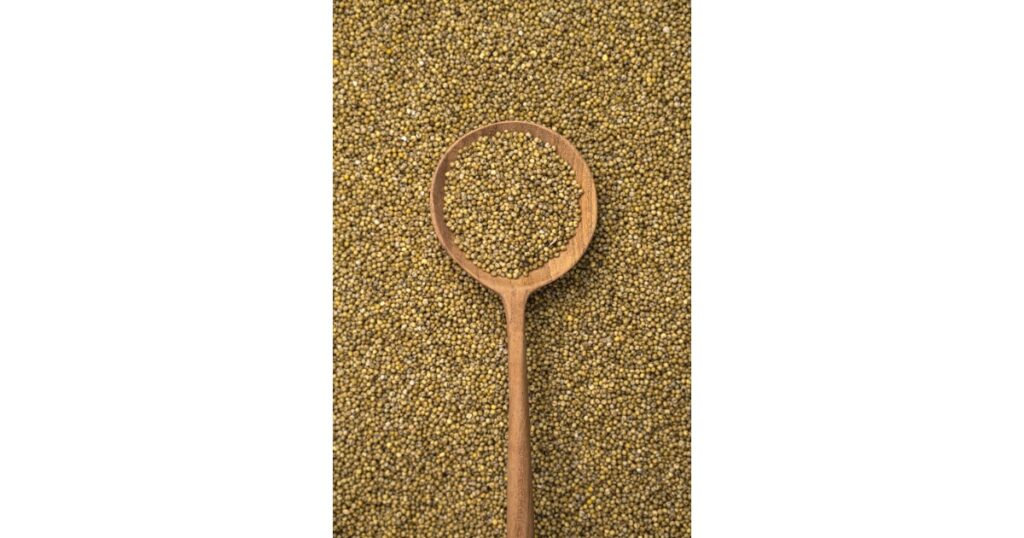
Foxtail millet is also called the Italian millet. It is a source of many essential nutrients like healthy carbs, protein, dietary fiber, zinc, iron, calcium, phosphorus, and magnesium8.
Foxtail millet is considered very beneficial for people with heart disorders and diabetes due to its high magnesium content. Its high fiber content plays a crucial role in digestive health, promoting regular bowel movements, and preventing constipation.
It also has an impressive amino acid profile providing eight essential amino acids out of nine. It is easy to digest and besides keeping your energy levels up, foxtail millet can help meet your daily protein needs.
You can enjoy this gluten-free grain in porridge form or add it to pulao, upma, dosa or khichdi.
Kodo Millet
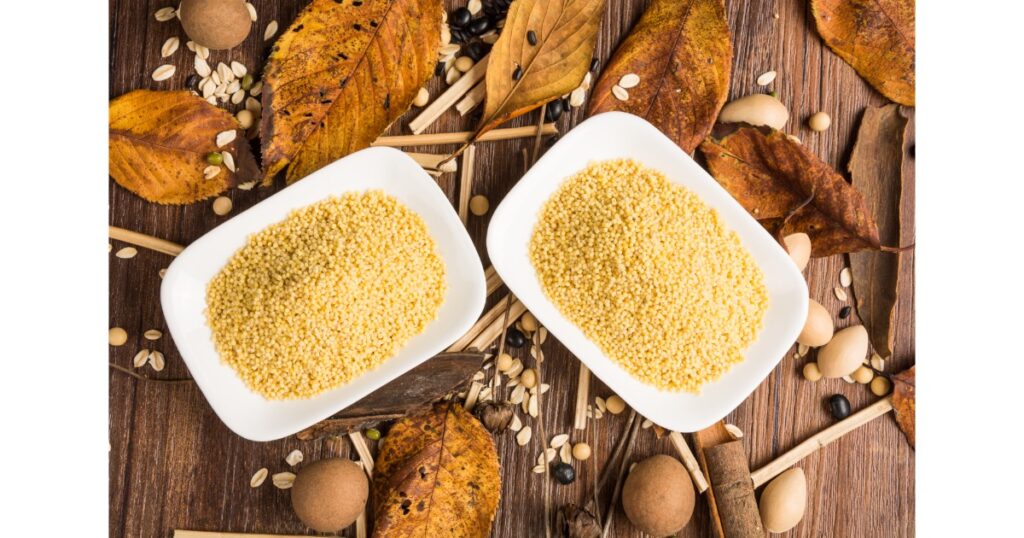
It is believed that kodo millet originated in India. This millet is easily available, cost-effective and a nutrient powerhouse.
The colour of kodo millet grain varies from red to grey. It is high in fiber, calcium, magnesium, iron, B vitamins and gluten-free with minimal phytic acid – an anti-nutrient9. Kodo millet is rich in flavonoids with exceptional antioxidant effects.
Numerous studies suggest that kodo millet possesses anti-diabetic, anti-cancer, and anti-ageing properties.
Kodo millet can be used to make dosa, idli, homemade bread, porridges, infant formulas, and baked foods. It can also be enjoyed in puffed or popped form.
Pearl Millet / Bajra
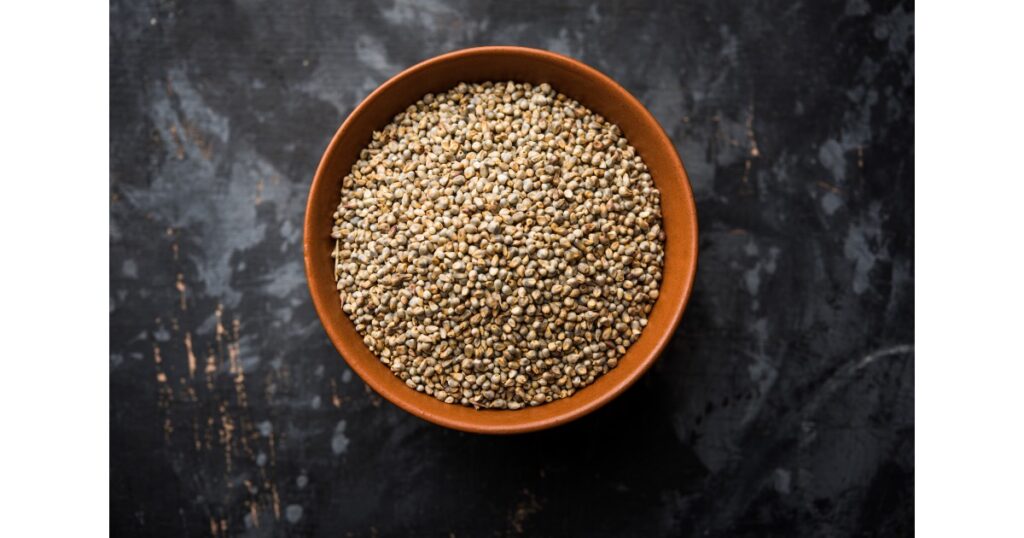
Pearl millet or bajra is a coarse grain and is widely grown and consumed in India.
Many of you must have tried traditional bajra roti packed with nutrition.
Bajra is naturally gluten-free and high in plant-based nutrients like antioxidants and phytochemicals. It also contains phosphorus, zinc, magnesium, copper, potassium, manganese, and B vitamins10.
Pearl millet is considered suitable for people with diabetes or those aiming for weight loss.
This grain can be enjoyed in khichdi, kheer, laddoo, puffed or popped form. You can use pearl millet flour for healthy chapatis, cookies, dosa, bread, pancakes, or cheela.
Barnyard Millet / Sama Rice
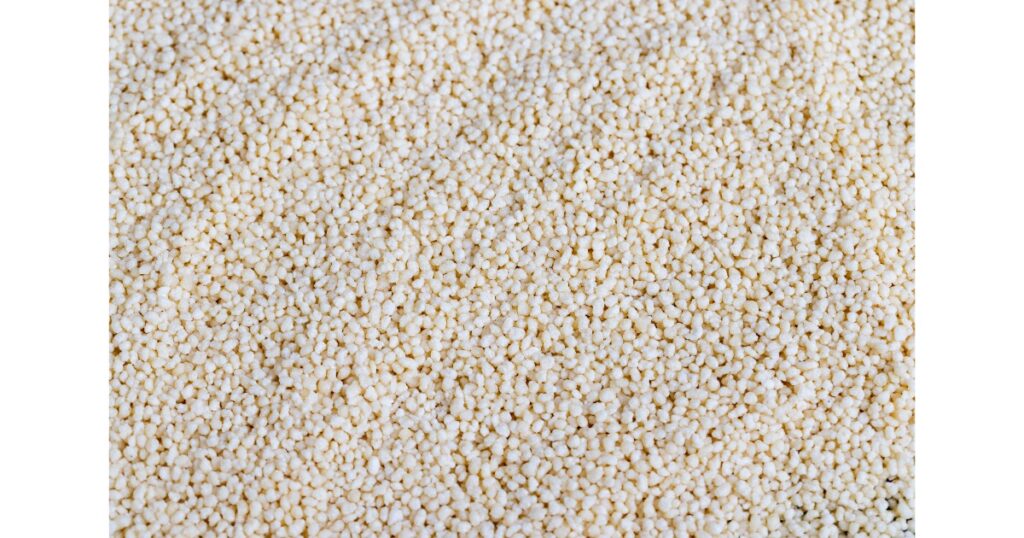
Barnyard millet is popularly consumed in India, especially during fasting days when people refrain from consuming grains like whole wheat and rice.
However, it is such a nutritious grain that it should not be restricted to fasting days only. Barnyard millet is low in calories but high in nutrition. Packed with dietary fiber, protein, magnesium, iron, calcium and phosphorus, this grain is easily digestible.
The low glycemic index of Barnyard millet makes it advantageous for diabetic people, weight watchers and those dealing with insulin resistance11. It does not increase your cholesterol levels and can also be enjoyed by people avoiding gluten.
Finger Millet / Ragi
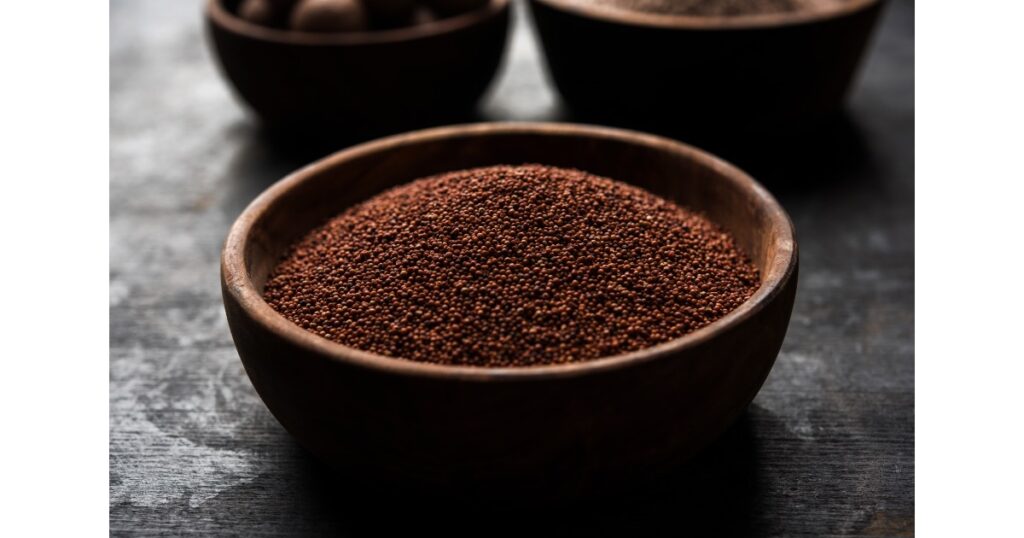
Ragi millet is one of the richest plant-based calcium and potassium sources12.
Extensively grown in India, ragi or nachni is one of the popular millets owing to its nutritional value and health benefits. It contains antioxidants having anti-microbial and anti-inflammatory properties.
Studies support that carbohydrates present in finger millet are diabetic-friendly and have a better glycemic response13. Ragi is also superb for our skin health and gut health. Its high antioxidant and fiber content encourages a heathy gut, supports better digestion and fights cancer-causing free radicals.
You can use ragi millet to make lip-smacking power-packed idlis, dosa, porridge, energy balls, cookies, and chapatis.
Sorghum Millet / Jowar
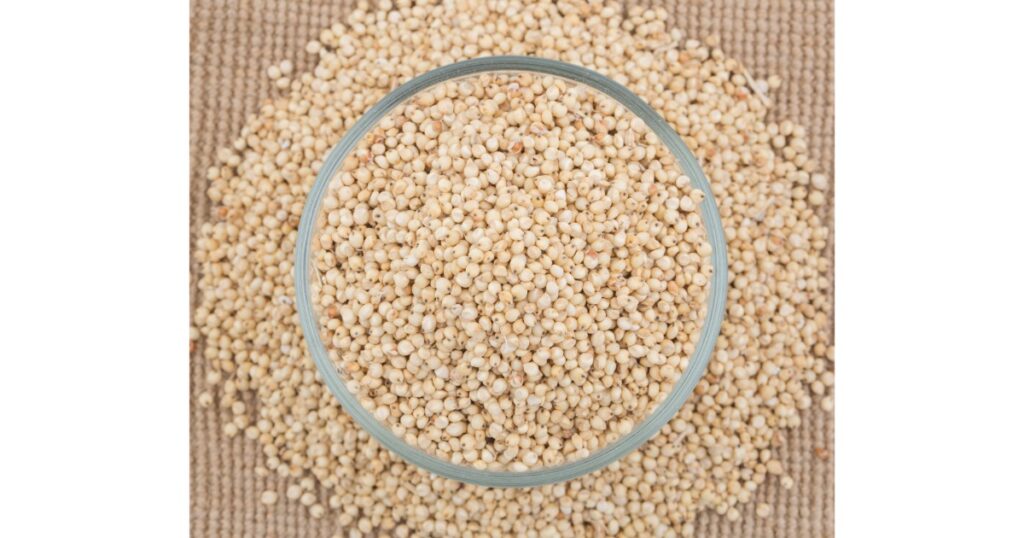
Another grain that can be included in a weight loss diet is jowar. It has recently become one of the staples of many athletes and fitness enthusiasts.
Jowar or sorghum boasts high levels of calcium, protein, iron, fiber, potassium, phosphorus, and B vitamins. Regular intake of sorghum may help avert several digestion-related issues like bloating, constipation, flatulence, etc.
Its high antioxidant content protects our heart and other organs.
People with regular workout schedules resort to jowar to support their fitness goals. Not only does it keep them energetic, but its high calcium, iron and magnesium content supports healthy joints and muscles to perform their workout better.
The high protein content improves satiety, prevents muscle loss and reduces unwanted food cravings, thereby, decreasing overall calorie intake.
Some people also add jowar flour to their face packs for topical application to reduce skin blemishes, pigmentation, and maintain hydration for a youthful look.
Proso Millet
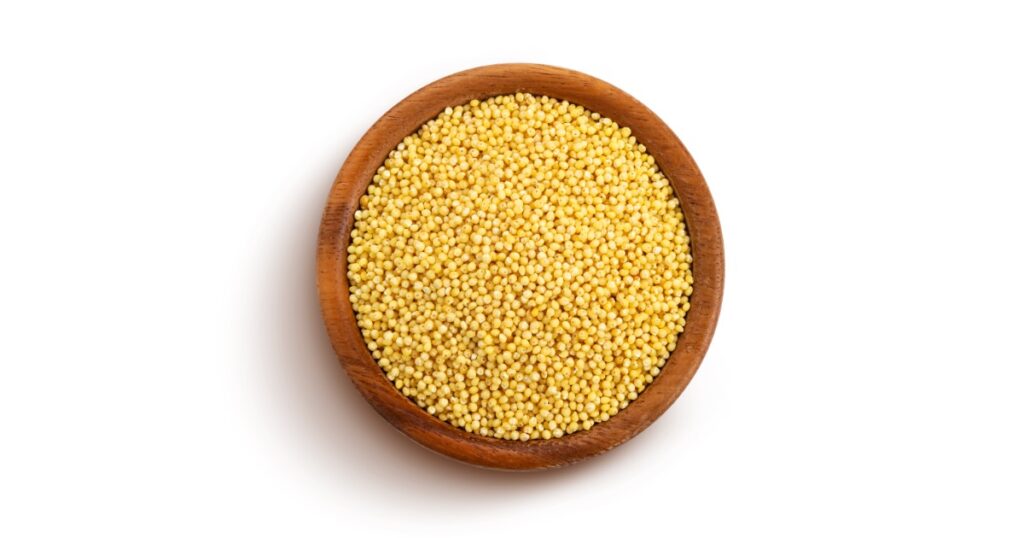
Similar to other millets, proso millet also exhibits an exceptional nutritional profile.
It is gluten-free, easy to digest, rich in protein, fiber, iron, calcium, magnesium, vitamin B6, and folic acid14. You can incorporate proso millet in your daily diet to keep your heart, cholesterol, blood glucose, and blood pressure levels in control.
Proso millet can be cooked or used in various recipes. You can consume it simply in boiled form like rice. Else, use its flour to make healthy chapatis, breads, dosa or baked items.
Millet Nutrition (Per 100g)
| Type of Millet | Energy (kcal) | Protein (g) | Carbs (g) | Fiber (g) | Fat (g) | Calcium (mg) | Potassium (mg) | Iron (mg) | Phosphorus (mg) | Magnesium (mg) |
| Foxtail | 331 | 12.30 | 60.09 | 6.39 | 4.3 | 31 | 250 | 3.6 | 290 | 81 |
| Kodo | 332 | 8.92 | 66.19 | 6.39 | 2.55 | 15.27 | 107.8 | 2.34 | 101 | 122 |
| Pearl | 348 | 10.96 | 61.78 | 11.49 | 5.43 | 27.35 | 365 | 6.42 | 289 | 124 |
| Barnyard | 346 | 10.13 | 65.55 | 7.72 | 3.89 | 16.06 | 105 | 1.26 | 130 | 91.41 |
| Ragi | 321 | 7.16 | 66.82 | 11.18 | 1.92 | 364 | 443 | 4.62 | 210 | 146 |
| Sorghum | 334 | 9.97 | 67.68 | 10.22 | 1.73 | 27.60 | 328 | 3.95 | 274 | 133 |
| Proso | 341 | 12.50 | 70.04 | 2.2 | 1.10 | 14 | 195 | 0.8 | 206 | 153 |
Delicious Millet Recipes for Weight Loss
Ragi Porridge
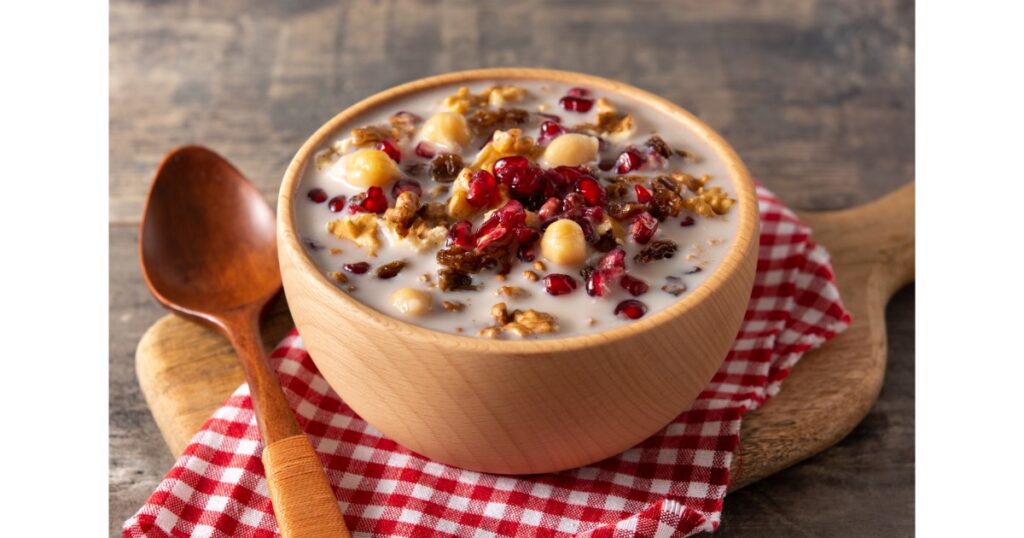
Ingredients –
- 1/2 cup Ragi flour
- 1 cup water
- 1 tbsp jaggery
- 1 cup milk
- Chopped nuts and seeds
Recipe –
- Mix ragi flour and water in a heated pan. Stir and mix well until the paste thickens with a smooth consistency. There should be no lumps.
- Cook the mixture until glossy. Add jaggery and mix well.
- After that add milk, mix well and turn the flame off.
- You healthy porridge, also called as ragi malt, is ready.
- Garnish with chopped nuts and seeds.
Millet Fried Rice
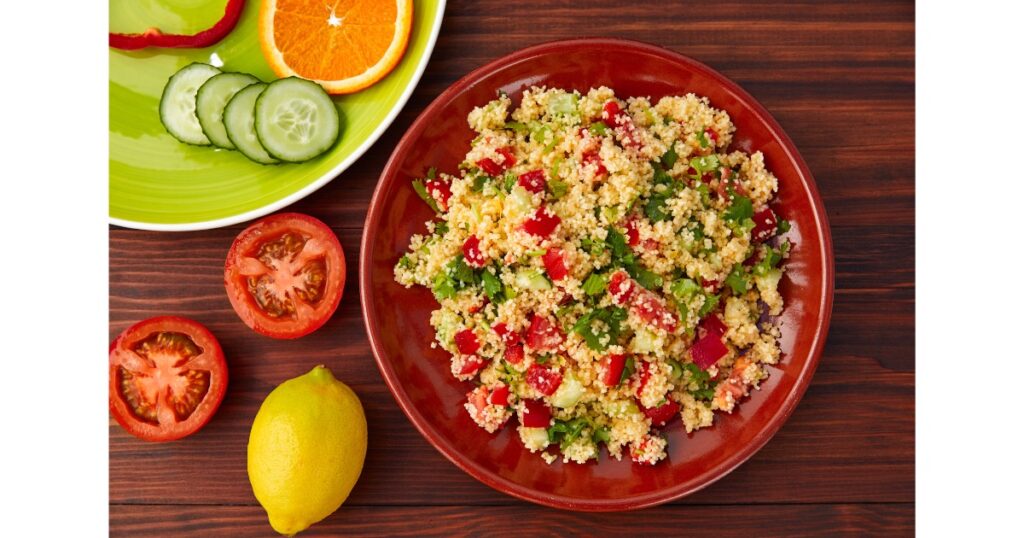
Ingredients –
- 1 cup any millet (boiled and cooled)
- 2 cup water
- 2 tsp olive oil
- Chopped spring onion
- 2 garlic cloves (minced)
- 1 small ginger piece (minced)
- 1/2 cup mixed chopped vegetables (green beans, red bell peppers, carrots, peas & sweet corns)
- Sauces like soy sauce and ketchup
- Salt and pepper to taste
Recipe –
- In a heated pan, add chopped onions and sauté until they turn translucent.
- Add minced garlic, ginger, and green chillies (if using). Sauté for another minute until fragrant.
- Add chopped veggies and stir-fry until the vegetables are tender yet crisp.
- Add sauces, salt and pepper powder.
- Add the cooked and cooled millet to the pan with the vegetables and sauces.
- Stir-fry for another 2-3 minutes, allowing the flavours to blend.
Chickpea & Millet Salad
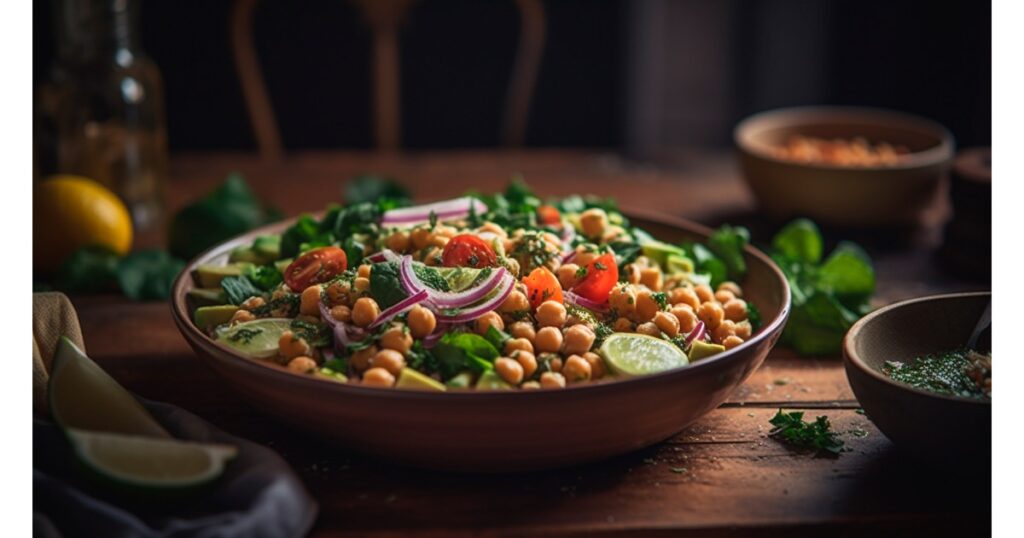
Ingredients –
- 1 cup any millet like pearl millet/barnyard millet (soaked and boiled)
- 1/2 cup boiled Chickpeas
- 1/4 cup mixed chopped vegetables like cucumber, tomato, bell peppers or carrots
- 2 tsp lemon juice
- 1 tsp extra-virgin olive oil
- Salt and pepper to taste
Recipe –
Mix all the ingredients and toss them well. You can garnish the salad with fresh coriander leaves.
Conclusion
To sum up, whether you are on a weight loss journey, or seeking to improve your overall well-being, consider the power of millets to diversify your meals and enjoy the health benefits.
Choose from the delightful array of Foxtail, Finger, Pearl, Sorghum, Barnyard, or Kodo to add a nutritious punch to your plate.
As you incorporate these fantastic millets into your diet, remember that consistency and balance are key to enjoying the journey to a healthier you!
Frequently Asked Questions
What is millet called in India?
India has a variety of millets that are known by different names. For example, millet like Pearl Millet is known as Bajra, Finger Millet as Ragi, Sorghum as Jowar, and Foxtail Millet as Kangni.
What are 20 types of millet?
Here is a list of 20 types of millets:
Pearl Millet (Bajra)
Finger Millet (Ragi)
Foxtail Millet (Kangni)
Proso Millet (Varagu)
Kodo Millet (Koden)
Little Millet (Kutki)
Barnyard Millet (Sanwa)
Browntop Millet (Korale)
Japanese Millet (Hie)
Italian Millet (Setaria italica)
Guinea Millet (Brachiaria deflexa)
Mountain Millet (Eleusine coracana)
Indian Barnyard Millet (Echinochloa colona)
Browntop Millet (Urochloa ramosa)
Indian Barnyard Millet (Echinochloa frumentacea)
Common Millet (Panicum miliaceum)
Siberian Millet (Panicum miliaceum)
German Millet (Setaria italica subsp. viridis)
Hungarian Millet (Setaria italica)
White Millet (Panicum miliaceum)
What are the 5 best millets?
There are various nutritious millets but jowar, bajra, foxtail millet, ragi, and kodo millet are popularly consumed.
What is millet to eat?
Millets are small grains or cereals that can be cooked and eaten in many ways like adding them to porridge, breads, stews, cookies, salads or simply boiling like rice in water.
Can we eat millets daily?
Yes, you can consume millets daily as per your daily dietary requirement. Overconsumption may increase the calorie load.
Which is best millet to eat?
There are various nutritious millets but jowar, bajra, foxtail millet, ragi, and kodo millet are popularly consumed.
Is ragi a millet?
Yes, ragi is one of the healthiest millets packed with nutrients like calcium, potassium, phosphorus, and dietary fiber.
Who should not eat millet?
While millets are generally safe and nutritious for most people, there are a few groups who may need to be cautious or avoid consuming millets like people with thyroid issues, kidney stones, or those with severe digestive issues. In addition, people on medications should seek advice from a nutritionist before adding millets to their diet.
Is it good to eat millet everyday?
Yes, you can enjoy millet everyday as per your daily dietary requirement. Avoid overconsumption to prevent the unwanted calorie load.
What are 5 benefits of millets?
1. Packed with nutrients
2. Antioxidant-rich
3. Naturally gluten-free
4. Prevent indigestion issues
5. Support healthy cholesterol and blood sugar levels
Does millet have side effects?
While millets are generally safe for most people, excessive consumption or improper preparation may lead to indigestion issues, allergic reactions or kidney stones.
Is millet healthier than rice?
Both are healthy and the choice depends on your health goals. However, millets have a slight edge in terms of overall nutrition, weight management, and blood sugar control.
What are some millet porridge benefits?
Millet porridge is rich in nutrients like protein, calcium, fiber, magnesium, potassium, zinc, and many more. It is easy to digest, gluten-free and suitable for weight management, blood glucose control, and heart health.
How much millet to eat per day?
The requirement depends on your daily nutritional needs and health goals. However, for most adults, 1-2 servings of millet in your daily diet can be a healthy addition.
Are there any millets side effects?
While millets are generally safe for most people, excessive consumption or improper preparation may lead to indigestion issues, allergic reactions or kidney stones.
List the top 10 uses of millet.
Millets can be used in boiled form, or used to make porridge, dosa, upma, cookies, bread, salads, baby foods, salads, or as snacks in puffed/popped form.
What are some millet benefits for weight loss?
It is high in fibre, has a low glycemic index, supports better digestion and nutrient absorption, boosts metabolism, provides fullness in fewer calories, and reduces food cravings.
What is foxtail millet in Hindi?
It is known as “Kangni” or “Kakum” in Hindi.
What is barnyard millet in hindi?
Barnyard millet is known as “Sanwa”, “Samak”, or “Sama” in Hindi.
What are the top millet producing states in India?
Rajasthan, Maharashtra, Tamil Nadu, Karnataka, Gujarat, Uttar Pradesh, Andhra Pradesh, Telangana, and Madhya Pradesh.
Which millet is good for diabetes?
Several millets like foxtail millet, ragi, bajra and jowar are beneficial for individuals with diabetes due to their low glycemic index and other health-promoting properties.
Sources
- https://millets.res.in/m_recipes/Nutritional_health_benefits_millets.pdf ↩︎
- Anitha, S., Botha, R., Kane‐Potaka, J., Givens, D., Ananthan, R., Tsusaka, T. W., & Bhandari, R. K. (2021). Can millet consumption help manage hyperlipidemia and obesity?: A Systematic Review and Meta-Analysis. Frontiers in Nutrition, 8. https://doi.org/10.3389/fnut.2021.700778 ↩︎
- Kumar, S., & Kotwal, N. (2023). Millets (Shrianna) and lifestyle diseases: A healing touch. Medical Journal Armed Forces India, 79(3), 249–252. https://doi.org/10.1016/j.mjafi.2023.04.001 ↩︎
- Vissapragada, A., & Author_Id, N. (2021). A case study on using millets in daily diet for weight loss. International Journal of Nutritional Sciences, 6(3). https://doi.org/10.26420/intjnutrsci.2021.1057 ↩︎
- Anitha, S., Kane‐Potaka, J., Tsusaka, T. W., Botha, R., Ananthan, R., Givens, D., Parasannanavar, D. J., Subramaniam, K., Prasad, K., Vetriventhan, M., & Bhandari, R. K. (2021). A Systematic Review and Meta-Analysis of the potential of Millets for managing and reducing the risk of developing Diabetes Mellitus. Frontiers in Nutrition, 8. https://doi.org/10.3389/fnut.2021.687428 ↩︎
- Agrawal, P., Singh, B. R., Gajbe, U., Kalambe, M., & Bankar, M. N. (2023). Managing diabetes mellitus with Millets: a new solution. Cureus. https://doi.org/10.7759/cureus.44908 ↩︎
- Chen, Y., Zhang, R., Xu, J., & Ren, Q. K. (2022). Alteration of intestinal microflora by the intake of millet porridge improves gastrointestinal motility. Frontiers in Nutrition, 9. https://doi.org/10.3389/fnut.2022.965687 ↩︎
- Kalsi, R., & Bhasin, J. K. (2023). Nutritional exploration of foxtail millet (Setaria italica) in addressing food security and its utilization trends in food system. eFood, 4(5). https://doi.org/10.1002/efd2.111 ↩︎
- Bunkar, D. S. (2021). Nutritional, Functional Role of Kodo Millet and its Processing: A Review. International Journal of Current Microbiology and Applied Sciences, 10(01), 1972–1985. https://doi.org/10.20546/ijcmas.2021.1001.229 ↩︎
- Chavan, M., & Kale, R. V. (2021). Studies on Physico-chemical Analysis of Bajra (Pennisetum glaucum) used for Formulation of Cookies. International Journal of Current Microbiology and Applied Sciences, 10(7), 114–118. https://doi.org/10.20546/ijcmas.2021.1007.012 ↩︎
- Ugare, R., Chimmad, B. V., Naik, R., Bharati, P., & Itagi, S. (2011). Glycemic index and significance of barnyard millet (Echinochloa frumentacae) in type II diabetics. Journal of Food Science and Technology, 51(2), 392–395. https://doi.org/10.1007/s13197-011-0516-8 ↩︎
- Shobana, S., Krishnaswamy, K., Sudha, V., Malleshi, N. G., Anjana, R. M., Palaniappan, L., & Mohan, V. (2013). Finger Millet (Ragi, Eleusine coracana L.). In Advances in food and nutrition research (pp. 1–39). https://doi.org/10.1016/b978-0-12-410540-9.00001-6 ↩︎
- Devi, P. B., Vijayabharathi, R., Sathyabama, S., Malleshi, N. G., & Priyadarisini, V. B. (2011). Health benefits of finger millet (Eleusine coracana L.) polyphenols and dietary fiber: a review. Journal of Food Science and Technology, 51(6), 1021–1040. https://doi.org/10.1007/s13197-011-0584-9 ↩︎
- Habiyaremye, C., Matanguihan, J. B., Guedes, J. D., Ganjyal, G. M., Whiteman, M. R., Kidwell, K. K., & Murphy, K. M. (2017). Proso Millet (Panicum miliaceum L.) and Its Potential for Cultivation in the Pacific Northwest, U.S.: A Review. Frontiers in Plant Science, 7. https://doi.org/10.3389/fpls.2016.01961 ↩︎
